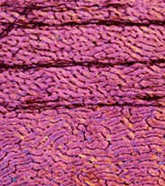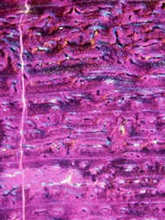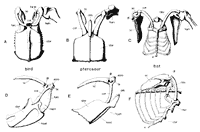|
|
|
|
|
|
| Pterosaurs are a third area of research for
Padian, who studies their evolutionary relationships, functional morphology
(physical form and structure), and flight. The first vertebrates to evolve
powered flight, pterosaurs interest Padian because of their close evolutionary
relationship to dinosaurs and because of the group’s geologic longevity—they
existed during the Mesozoic Era for about 150 million years.
For Padian, “[Pterosaurs] provide many interesting keys to the evolution of posture, locomotion, homeothermy, and vertebrate adaptation in the early Mesozoic Era, and still pose many intriguing challenges to vertebrate biologists.”
Padian’s fourth line of research involves the histology [microscopic structure] of fossil bone. This work encompasses a number of studies of many living and extinct vertebrates, in collaboration with Dr.Armand de Ricqlès of Paris and Dr.Jack Horner of Montana State University. Fossil bone microstructure provides a wealth of information with which to reconstruct aspects of dinosaur biology. Padian and his collaborators have drawn conclusions about dinosaur age, growth, and metabolism by comparing bone tissue types in fossil specimens. Examining cross-sections of fossil specimens under a microscope (see images at left), Padian and his collaborators look for patterns that indicate processes such as bone growth and repair. They also use engineering concepts and techniques to understand the functional adaptations of bone. |
|
| Browse the Interview: Profile | Research | Fossil Protection | Career | |
| Home | What’s new | About UCMP | History of life | Fossil collections | Other resources | |


